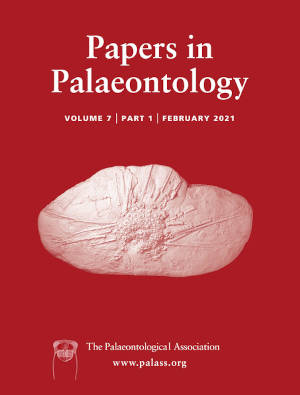Reg. Charity No. 1168330

Anomalocaris, the most well‐known genus of the diverse stem euarthropod group Radiodonta, was first reported over 100 years ago from the Burgess Shale (Canada). This large Cambrian apex predator was later treated as occurring in the southern Great Basin (California and Nevada, USA). We re‐evaluate the systematic affinities of previously described material from the Pioche Formation, Nevada, and the Latham Shale, California, and describe the first radiodonts from the Pyramid Shale Member, Carrara Formation, California. Latham Shale (Cambrian Series 2, Stage 4, upper Dyeran) specimens previously assigned to Anomalocaris are reinterpreted as Ramskoeldia consimilis?, an amplectobeluid previously known only from the Chengjiang biota (Cambrian Series 2, Stage 3). Younger material from the Pioche and Carrara Formations (Series 2, Stage 4) is described as a new Anomalocaris species, A. magnabasis. This new species sheds light on the two‐part structure of Anomalocaris ventral endites, a potentially important character for distinguishing species, and reveals a sequence of five disarticulation stages for frontal appendages. The oldest Hurdia from Laurentia is also reported from the Pioche Formation (Cambrian Series 2, Stage 4). A changeover in taxonomic composition of the Radiodonta in the southern Great Basin is recognized: Anomalocaris replaces Ramskoeldia in the upper Dyeran, but it is not associated with a replacement of local olenelloid trilobites or seen in radiodonts elsewhere in Laurentia. These new data, combined with a summary of known radiodont occurrences, suggest that Anomalocaris species did not have large geographical distributions, when compared with other radiodonts such as Hurdia and Caryosyntrips.